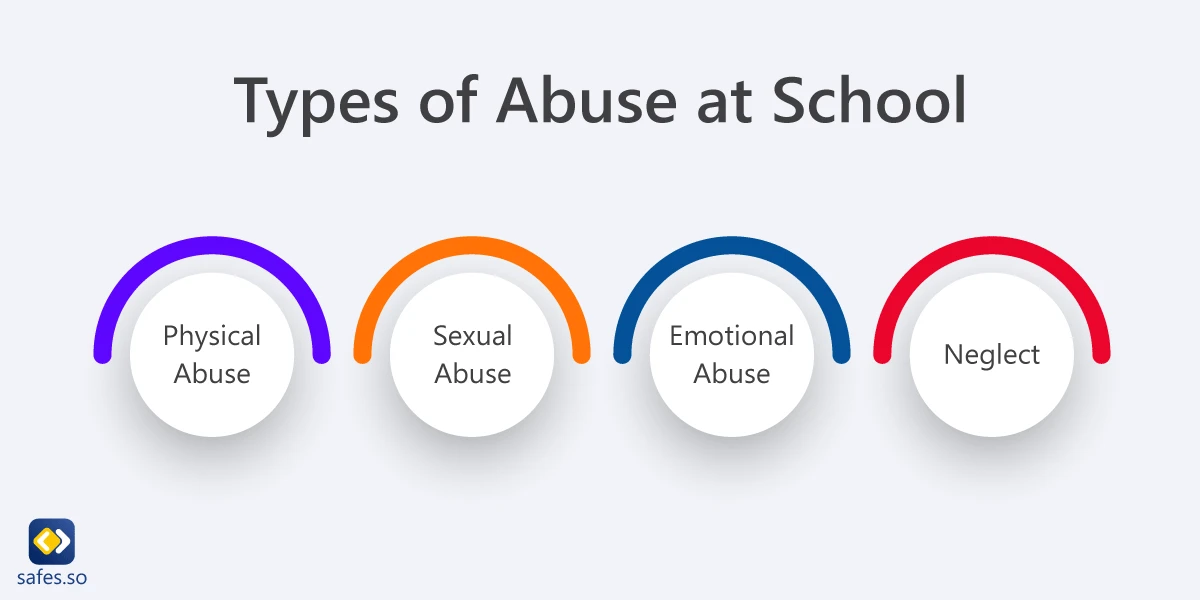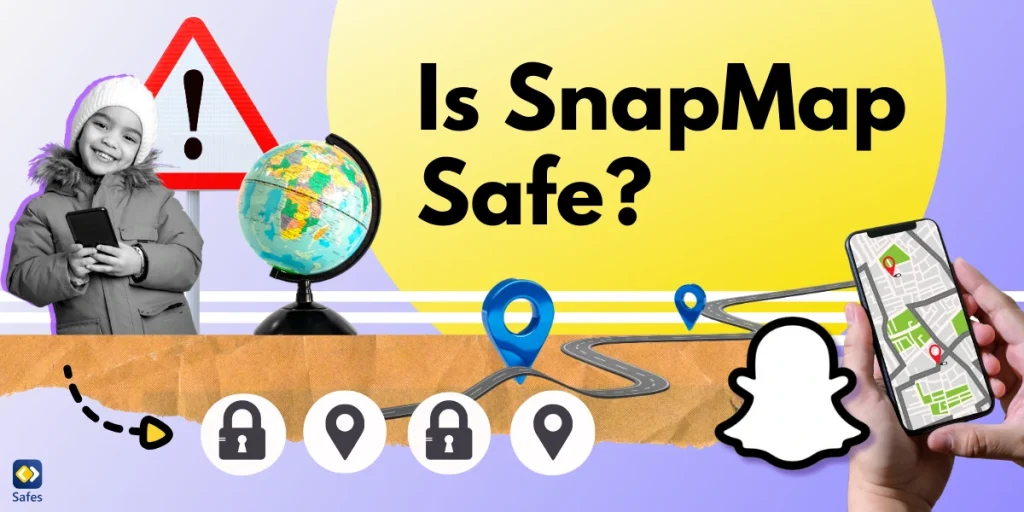Schools are supposed to be safe havens for students, where they can learn, grow, and thrive in a nurturing environment. Unfortunately, this is not always the case. Schools can be hotbeds for different types of abuse, such as physical, emotional, and sexual abuse. The prevalence of abuse in schools underscores the importance of having protocols in place to prevent and respond to such incidents. Understanding the different types of abuse and their prevention and response protocols is crucial in ensuring the safety and well-being of students. In this blog post, we will discuss the different types of abuse in schools and the protocols for prevention and response.
Download and Start Your Free Trial of the Safes Parental Control App
Types of Abuse
Abuse in schools is a serious issue that can have lasting effects on students. There are different types of abuse that can occur in schools, including physical abuse, sexual abuse, emotional abuse, and neglect. In the following, we’ll discuss each type of abuse and their signs, give examples, as well as offer solutions to prevent or address them.

Physical Abuse
Physical abuse is the intentional use of physical force against a student that causes harm or injury. Examples of physical abuse include hitting, kicking, pushing, or slapping a student. To prevent physical abuse, schools should have clear policies that prohibit the use of physical force against students, and staff should be trained in non-violent behavior management strategies. Signs of physical abuse include unexplained bruises, injuries, or marks on a student’s body. Response protocols should include reporting the abuse to the appropriate authorities and providing medical attention to the student if necessary.
Sexual Abuse
Sexual abuse is any sexual activity between an adult and a student or between two students that is non-consensual or inappropriate. Examples of sexual abuse include unwanted touching, sexual comments or jokes, or sexual assault. To prevent sexual abuse, schools should have policies and procedures in place for reporting and investigating allegations of sexual abuse. Staff should receive training on how to recognize signs of sexual abuse and how to respond appropriately. Signs of sexual abuse include changes in behavior, unexplained injuries, or sudden changes in academic performance. Response protocols should consist of reporting the abuse to the appropriate authorities and providing support to the student, such as counseling or medical attention.
Emotional Abuse
Emotional abuse is the use of words, actions, or inactions to cause emotional harm to a student. Examples of emotional abuse include bullying, intimidation, or making threats. To prevent emotional abuse, schools should have policies in place to address bullying and harassment, and staff should receive training on how to recognize signs of emotional abuse and how to respond appropriately. Signs of emotional abuse include changes in behavior, anxiety or depression, or social withdrawal. Response protocols should include reporting the abuse to the appropriate authorities and providing support to the student, such as counseling or therapy.
Neglect
Neglect is failing to provide a student with basic needs, such as food, shelter, or medical care. Examples of neglect include not providing adequate food or clothing, leaving a student unsupervised for long periods of time, or failing to seek medical attention for a student who is sick or injured. To prevent neglect, schools should have policies in place to ensure that students’ basic needs are met, and staff should receive training on how to recognize signs of neglect and how to respond appropriately. Signs of neglect include poor hygiene, unexplained absences, or frequent illnesses. Response protocols should include reporting the neglect to the appropriate authorities and providing support to the student, such as medical attention or social services.
In conclusion, schools must take a proactive approach to preventing and responding to types of abuse to ensure the safety and well-being of their students. By understanding the different kinds of abuse and their signs, schools can develop effective policies and response protocols that protect students from harm.

Importance of School Policies and Protocols in Preventing Abuse
School policies and protocols play a crucial role in preventing and responding to different types of abuse in schools, including physical abuse, sexual abuse, emotional abuse, and neglect. Effective policies enable schools to create a safe and supportive environment that promotes the well-being of students. For instance, policies that require background checks for all staff and volunteers, strict supervision guidelines, and clear reporting protocols help prevent physical abuse.
Schools can prevent sexual abuse by implementing policies that prohibit any form of sexual misconduct, provide age-appropriate sex education, and offer counseling and support services for victims. Emotional abuse can be prevented by implementing policies that foster positive relationships between students and staff members, promote healthy communication, and address bullying and harassment. Neglect can be prevented by ensuring that students have access to adequate food, shelter, and medical care, and by offering support services for families in need.
Effective policies and protocols not only prevent abuse but also provide a clear response plan in case of any incidents. Schools must take a proactive approach to preventing and responding to different types of abuse to ensure the safety and well-being of their students.
Importance of School Policies and Protocols in Responding to Abuse
School policies play a crucial role in responding to types of abuse from parents or others that students may experience. Effective policies and protocols can not only prevent abuse but also provide a clear response plan in case of any incidents. Background checks for staff and volunteers, strict supervision guidelines, and transparent reporting protocols are some examples of effective policies.
Additionally, policies that prohibit sexual misconduct, age-appropriate sex education, counseling and support services for victims, and policies that foster positive relationships and healthy communication are also essential. Schools must ensure access to adequate food, shelter, and medical care to prevent neglect. By taking a proactive approach, schools can ensure the safety and well-being of their students when it comes to abuse from parents or other people.

Types of Abuse: Conclusion
In conclusion, school policies play a crucial role in responding to types of abuse from parents that students may experience. Effective policies and protocols can prevent abuse and provide a clear response plan. By providing a safe and supportive environment, schools can ensure that students can thrive academically and prevent different forms of abuse. Schools need to prioritize the safety and well-being of students and take proactive steps to prevent and address all types of abuse.
Your Child’s Online Safety Starts Here
Every parent today needs a solution to manage screen time and keep their child safe online.
Without the right tools, digital risks and excessive screen time can impact children's well-being. Safes helps parents set healthy boundaries, monitor activity, and protect kids from online dangers—all with an easy-to-use app.
Take control of your child’s digital world. Learn more about Safes or download the app to start your free trial today!




